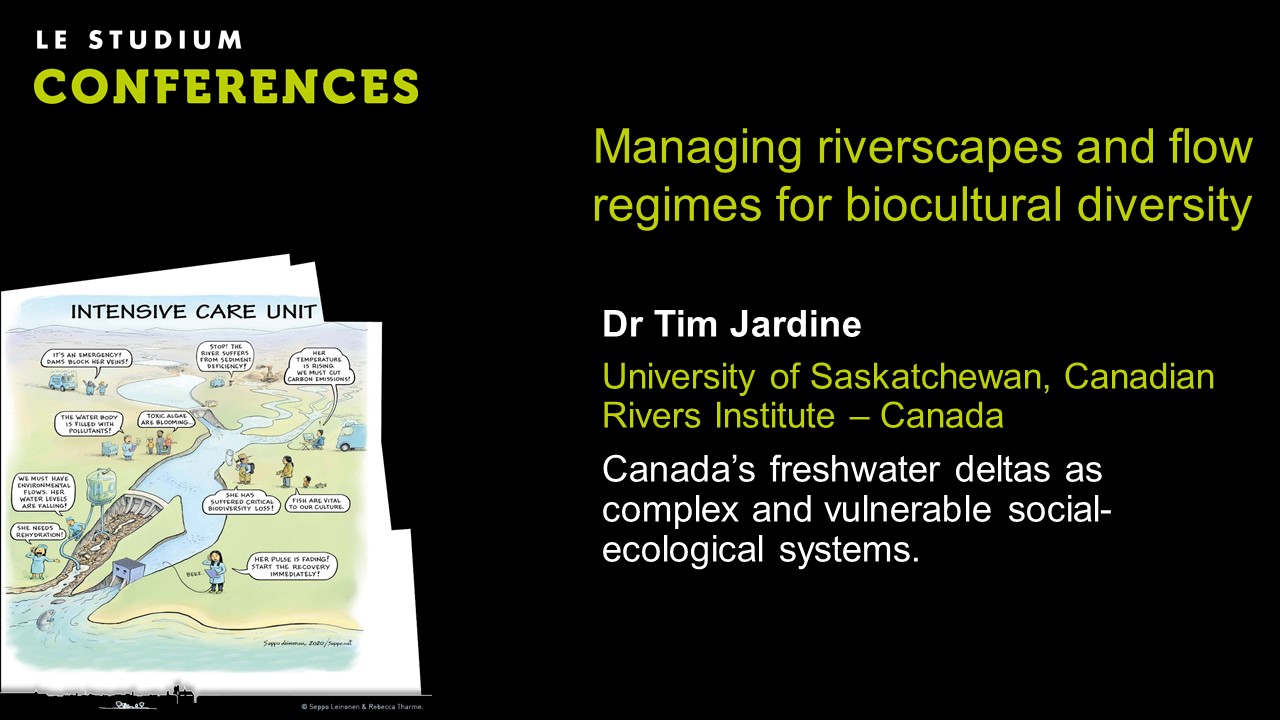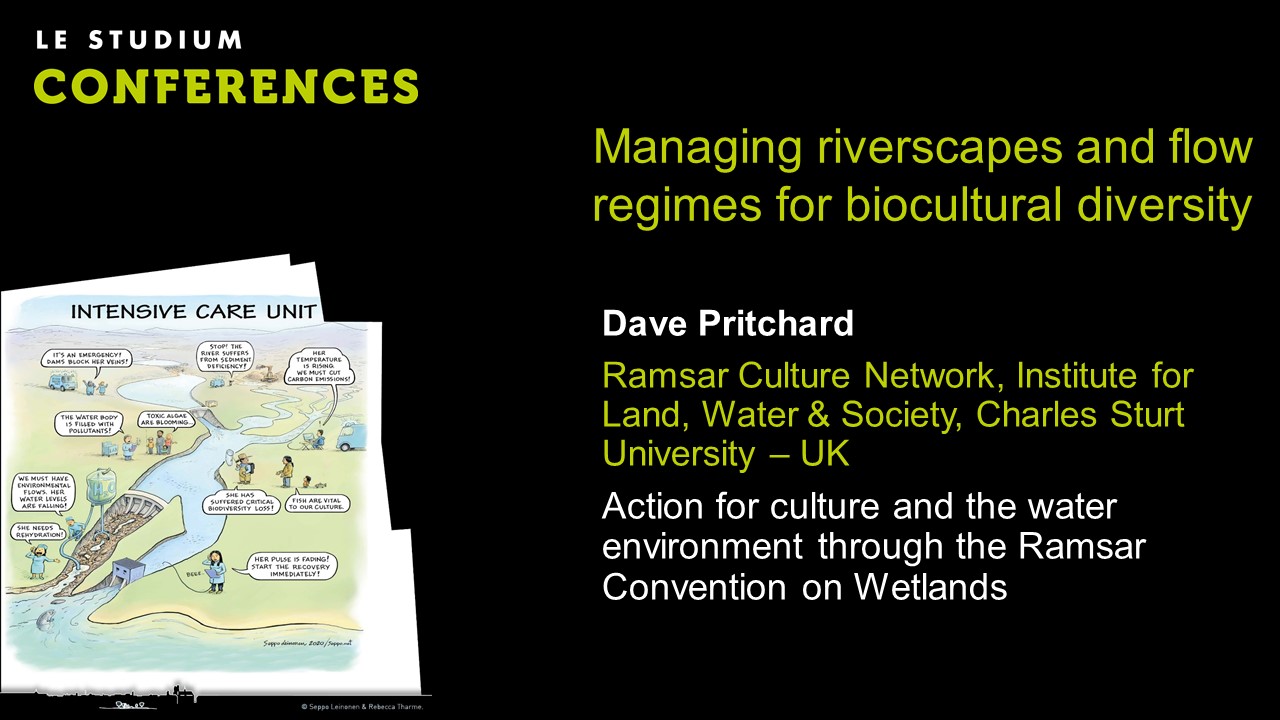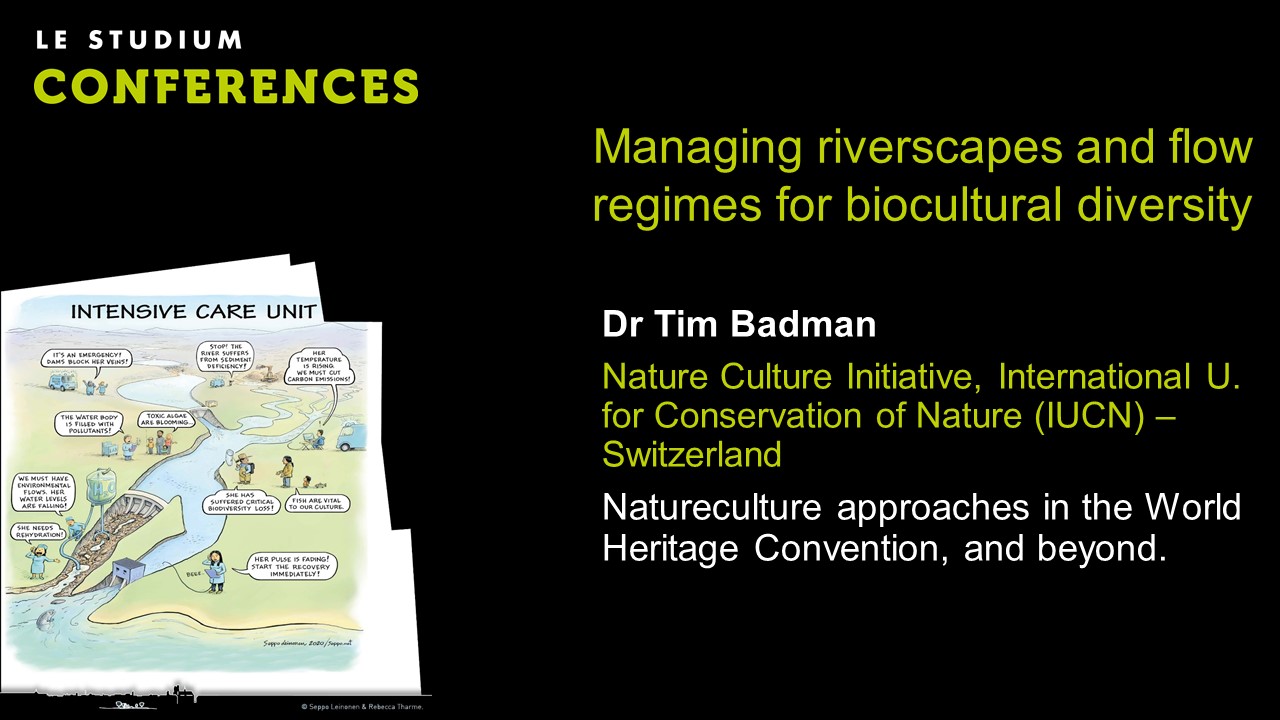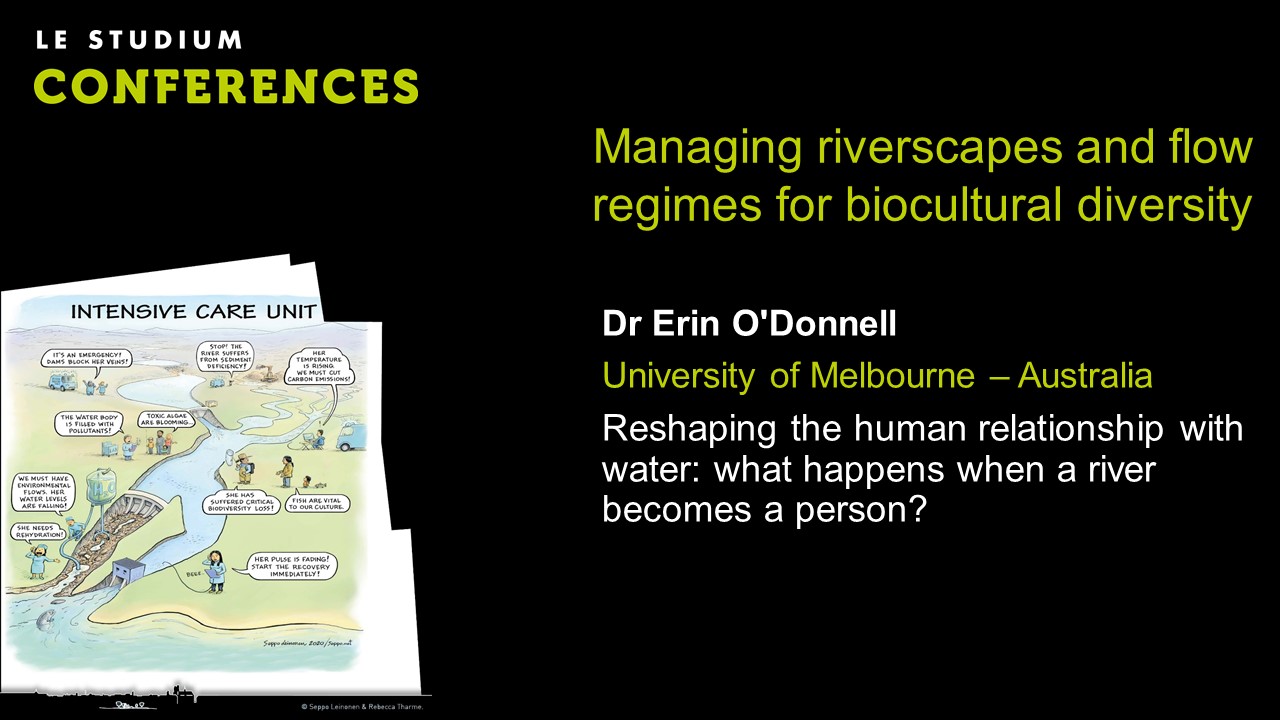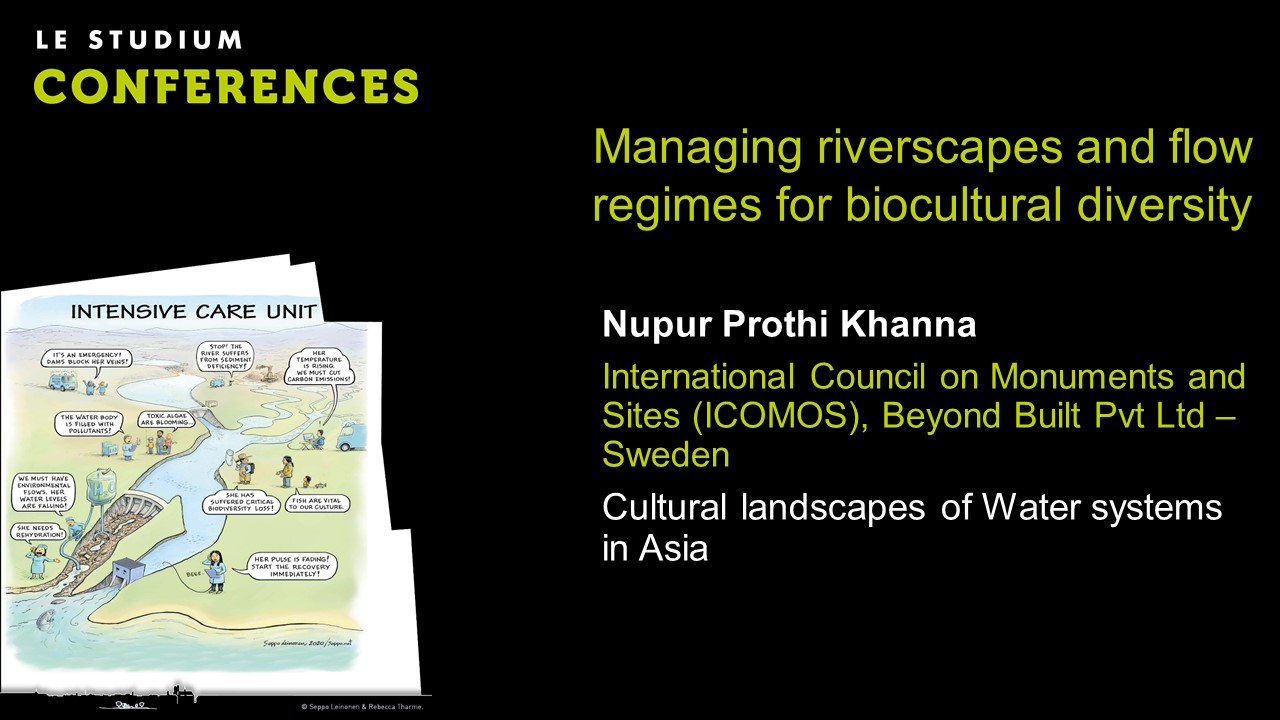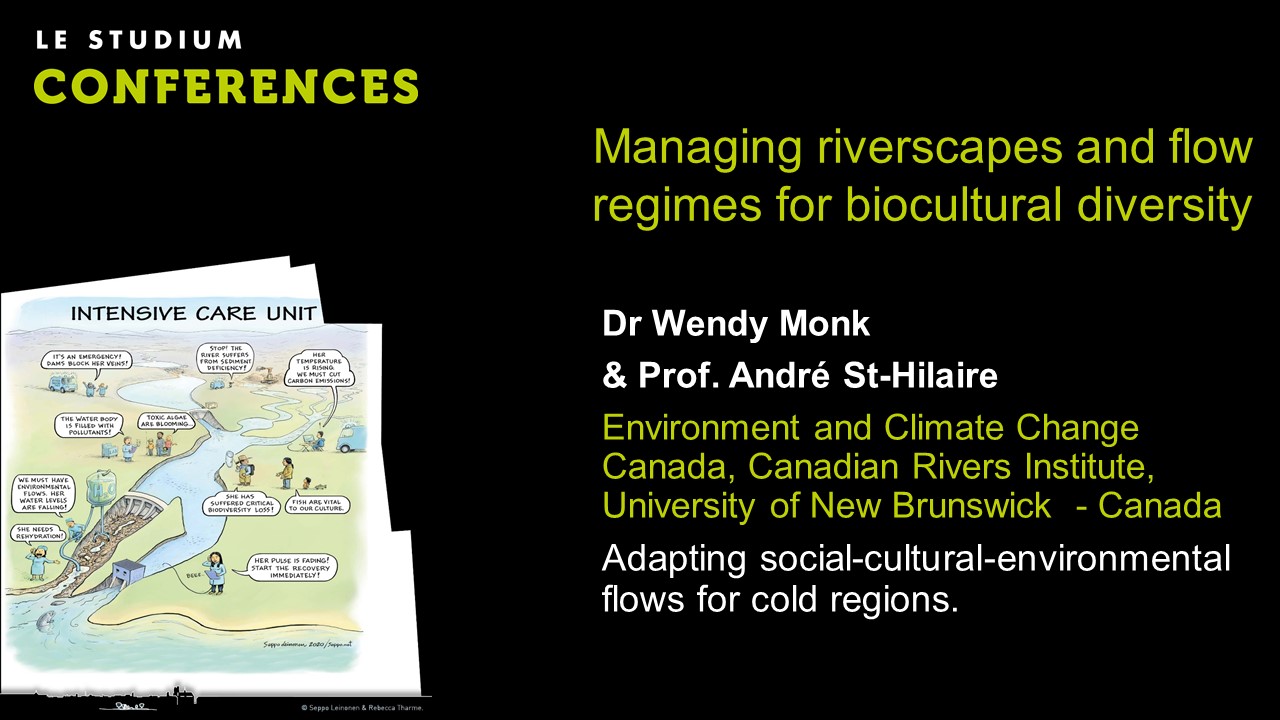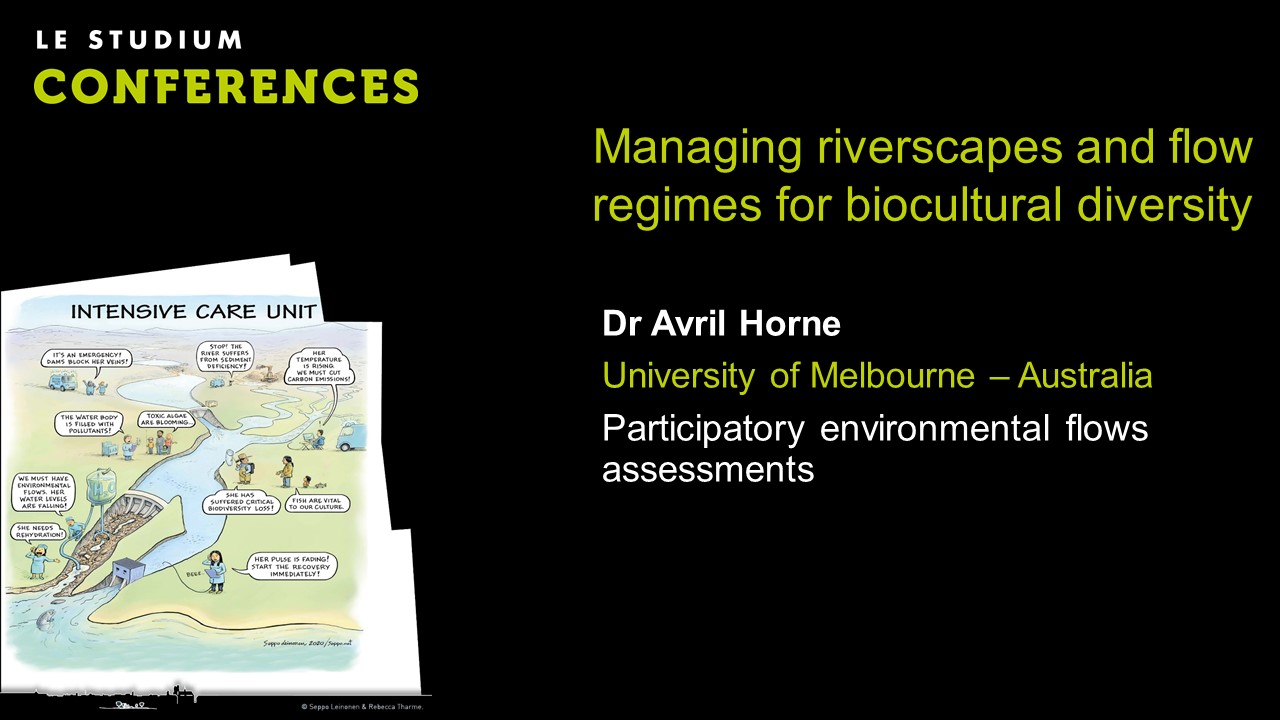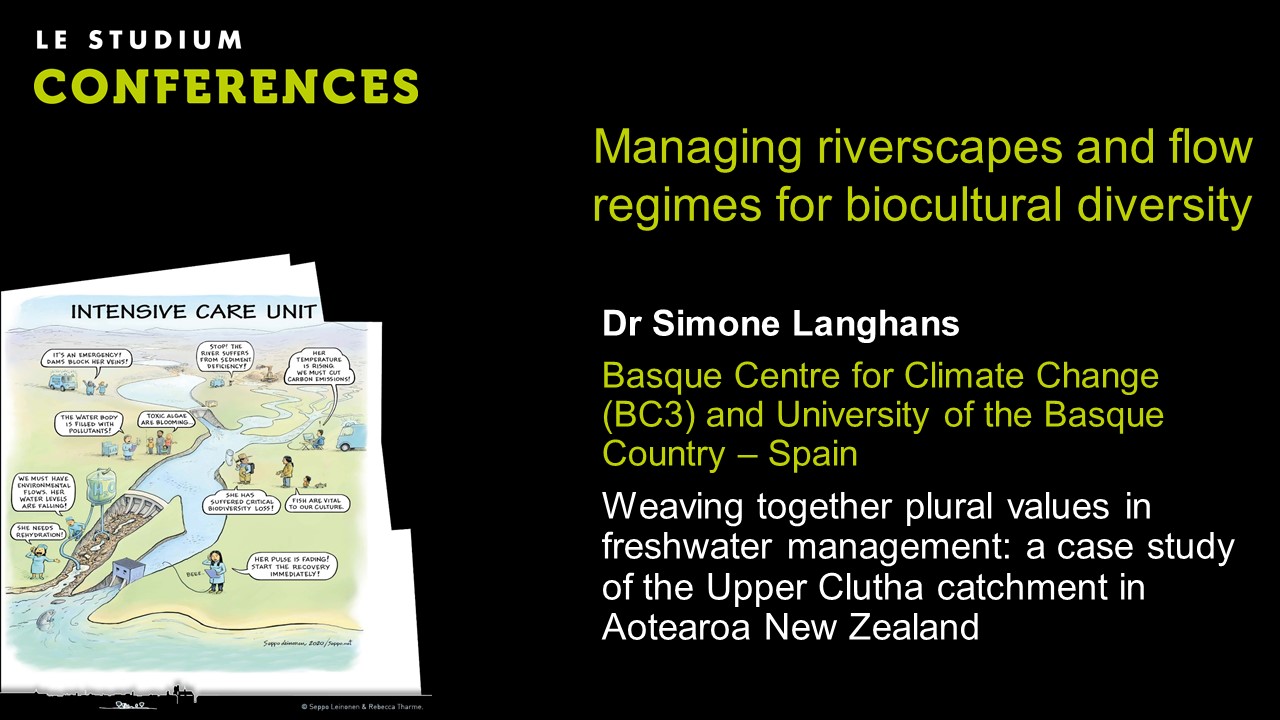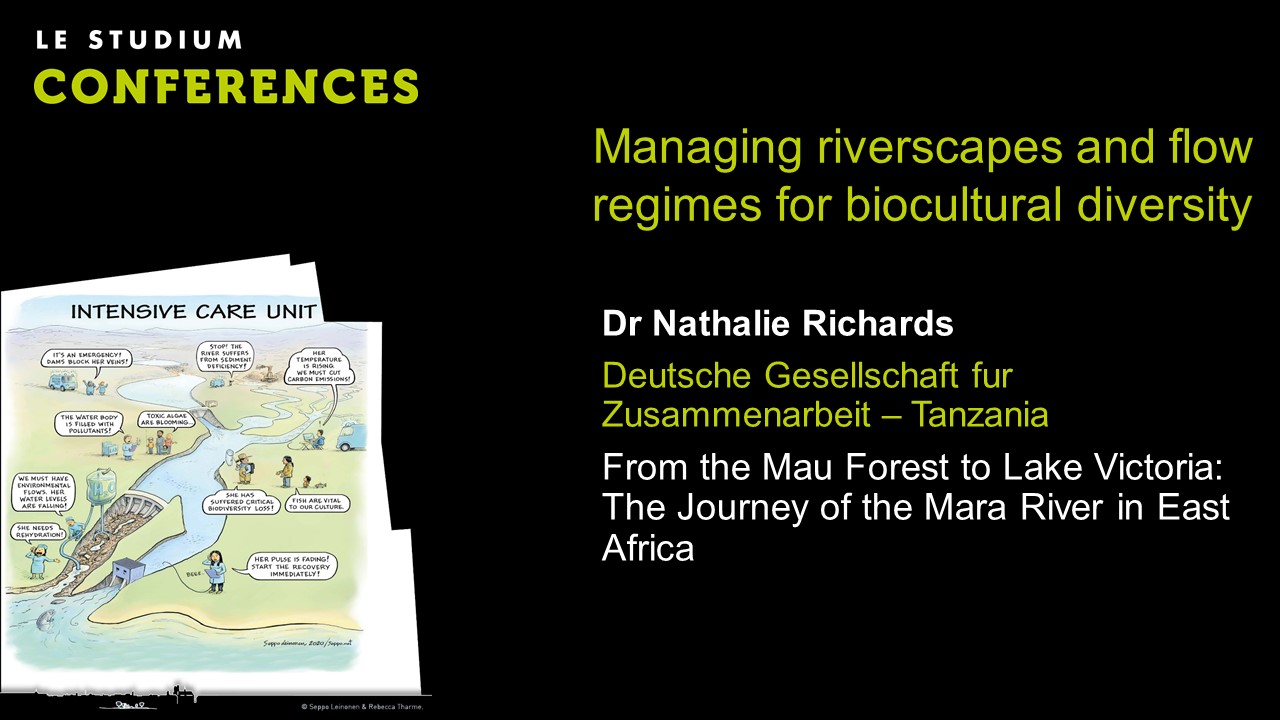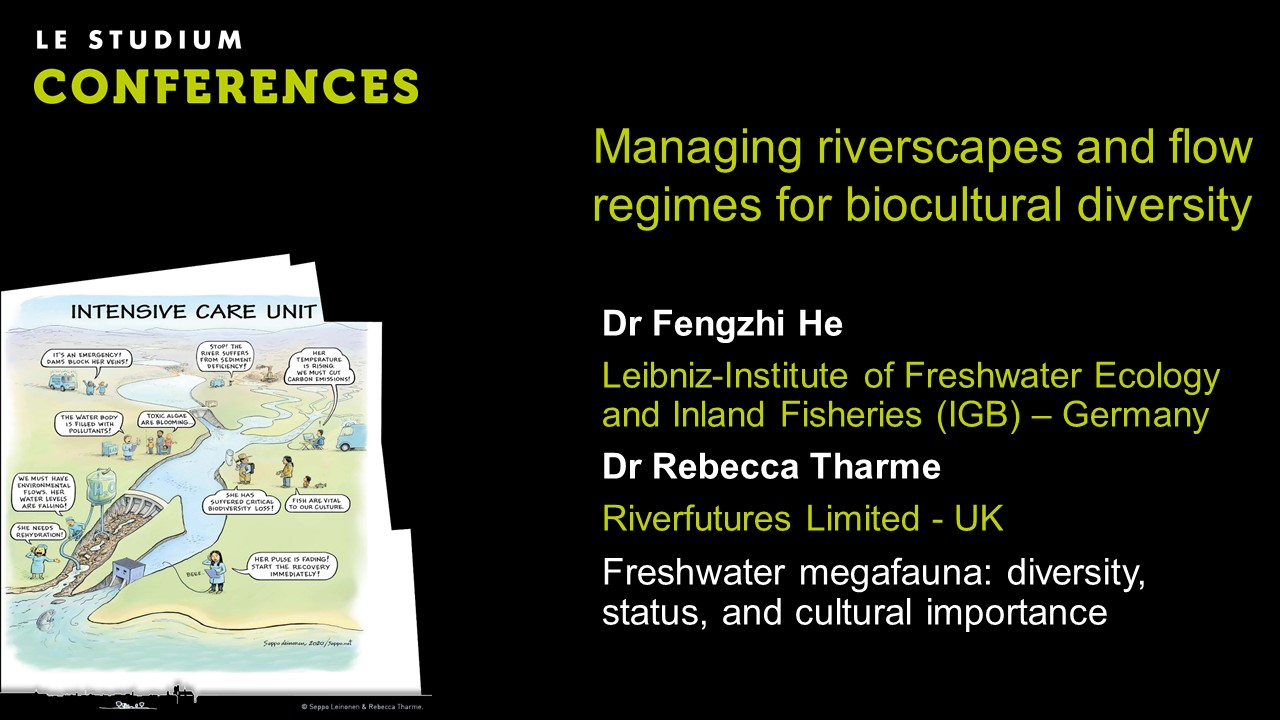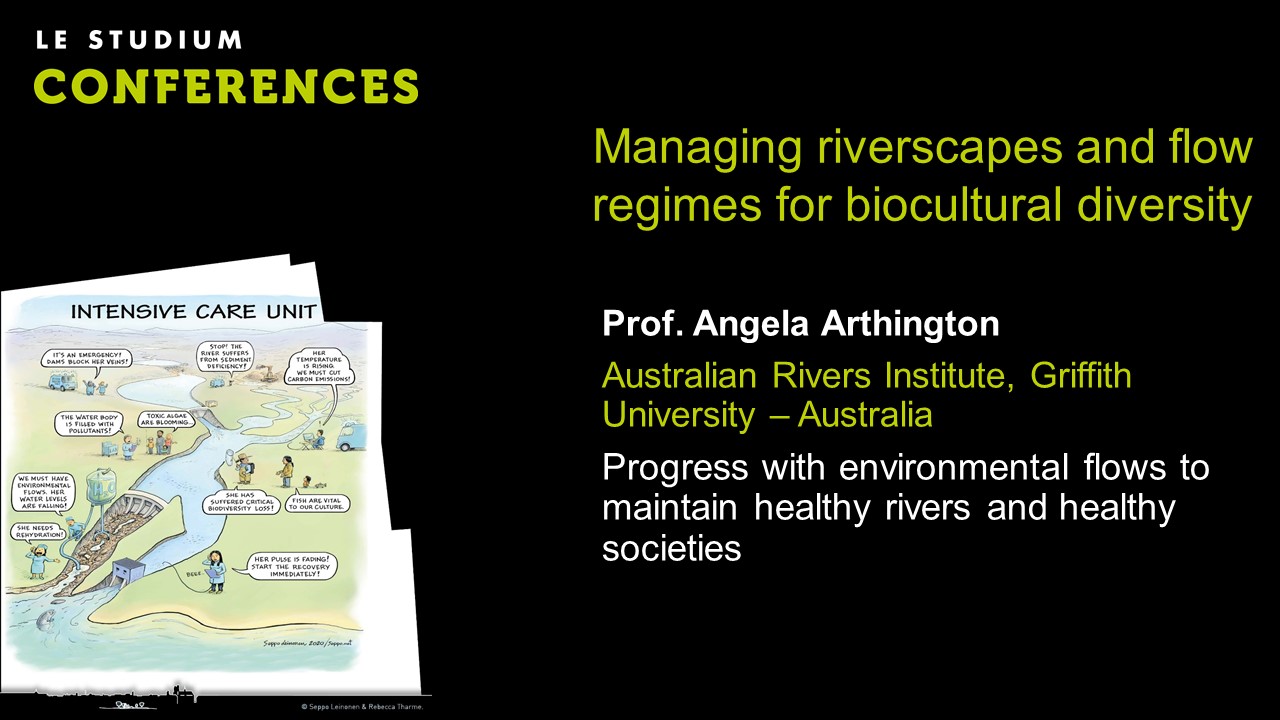Notice
Prof. Karl Wantzen - Development(s) of the River Culture Concept
- document 1 document 2 document 3
- niveau 1 niveau 2 niveau 3
Descriptif
Rivers give rhythm to all life in theircatchments. Floods and droughts trigger both, etho-physiological adaptations bybiota, resulting in biodiversity, and one species, H. sapiens, resulting incultural diversity. The River Culture Concept (2016) takes an attempt tore-establish harmony between humans and rivers. The five tenets of the conceptinclude, (i) reconsidering priorities onthe use of riverine assets, (ii) integrating the natural flow regime into rivermanagement, (iii) rediscovering traditional ecological knowledge (and by nomeans all ancient use forms), (iv) copying natural adaptive strategies(“ecosystem bionics”), and (v) a territorial reorganization, making thecatchment the central administrative unit (“bassin de responsabilité”). Practicalsteps focus on human-river-relationships including (i) a typology of theirexpressions (e.g., spiritual, religious, utilitaristic, medical), (ii) atemporal and causal analysis of the ruptures, (iii) an appreciation ofstill-existing, newly developed, or transformed River Culture Actions that helpto manage river better, (iv) specific case studies along a gradient from moretraditional to highly modernized cultures (focus on urban systems), (v)transfer and transformation studies how this knowledge can be integrated anddistributed to manage rivers better. This is documented in a series of papers,PhD studies and the recent book “River Culture – Life in the rhythm of thewaters” (UNESCO Publishing, 2nd half of 2021).
Thème
Dans la même collection
-
Dr Tim Jardine - Canada’s freshwater deltas as complex and vulnerable social-ecological systems.
In north-western Canada, glacial retreat left behind large lakes that led to the development of three massive freshwater deltas (Peace-Athabasca, Slave and Saskatchewan). The productivity of these
-
Dave Pritchard - Action for culture and the water environment through the Ramsar Convention on Wetl…
The intergovernmental Ramsar Convention on Wetlands celebrates its 50th anniversary this year. Its global treaty provisions and conservation policy frameworks have always been based on the best
-
Dr Tim Badman - Natureculture approaches in the World Heritage Convention, and beyond.
This paper will provide a review of work being undertaken to bring together the consideration of nature and culture in policies, programmes and practices of the World Heritage Convention, and a
-
Dr Erin O'Donnell - Reshaping the human relationship with water: what happens when a river becomes …
Globally, the status of rivers in law is changing rapidly, as rivers themselves are beginning to receive legal rights. This growing transnational movement accelerated in 2017 with the recognition of
-
Nupur Prothi Khanna - Cultural landscapes of Water systems in Asia
In this ‘SDG Decade of Action” we are aiming to facilitate a nature-culture orientation related to water wisdom with a focus on our young citizens. Traditional knowledge related to water has
-
Adapting social-cultural-environmental flows for cold regions.
In northern regions, many rivers remain ice-covered for a period of three to six months and have two distinct low flow periods: mid-winter and mid to late summer.
-
Dr Avril Horne - Participatory environmental flows assessments
Several of the key challenges to implementing environmental flows are related to the social and political context of environmental flows projects. These include community acceptance and buy in,
-
Dr Simone Langhans - Weaving together plural values in freshwater management: a case study of the U…
Public participation is an effective way to resolve the tensions between contested objectives, while maintaining ecological integrity. New Zealand is one of the few countries that takes a
-
Dr Nathalie Richards - From the Mau Forest to Lake Victoria: The Journey of the Mara River in East …
The Mara River starts its journey in the Mau forest in Kenya, flowing through diverse waterscapes and famous savannahs into Tanzania, where it reaches the Mara wetland system before spilling into
-
Freshwater megafauna: diversity, status, and cultural importance
By Dr Fengzhi He and Dr Rebecca Tharme : Megafauna species play important ecological roles. Owing to their intrinsic characteristics such as large habitat requirements, long lifespan, and late
-
Prof. Angela Arthington - Progress with environmental flows to maintain healthy rivers and healthy …
The science and practical applications of environmental flows (e-flows) have advanced rapidly since the early 1980s. E-flows serve as a means to protect the flow regimes and ecosystems of

